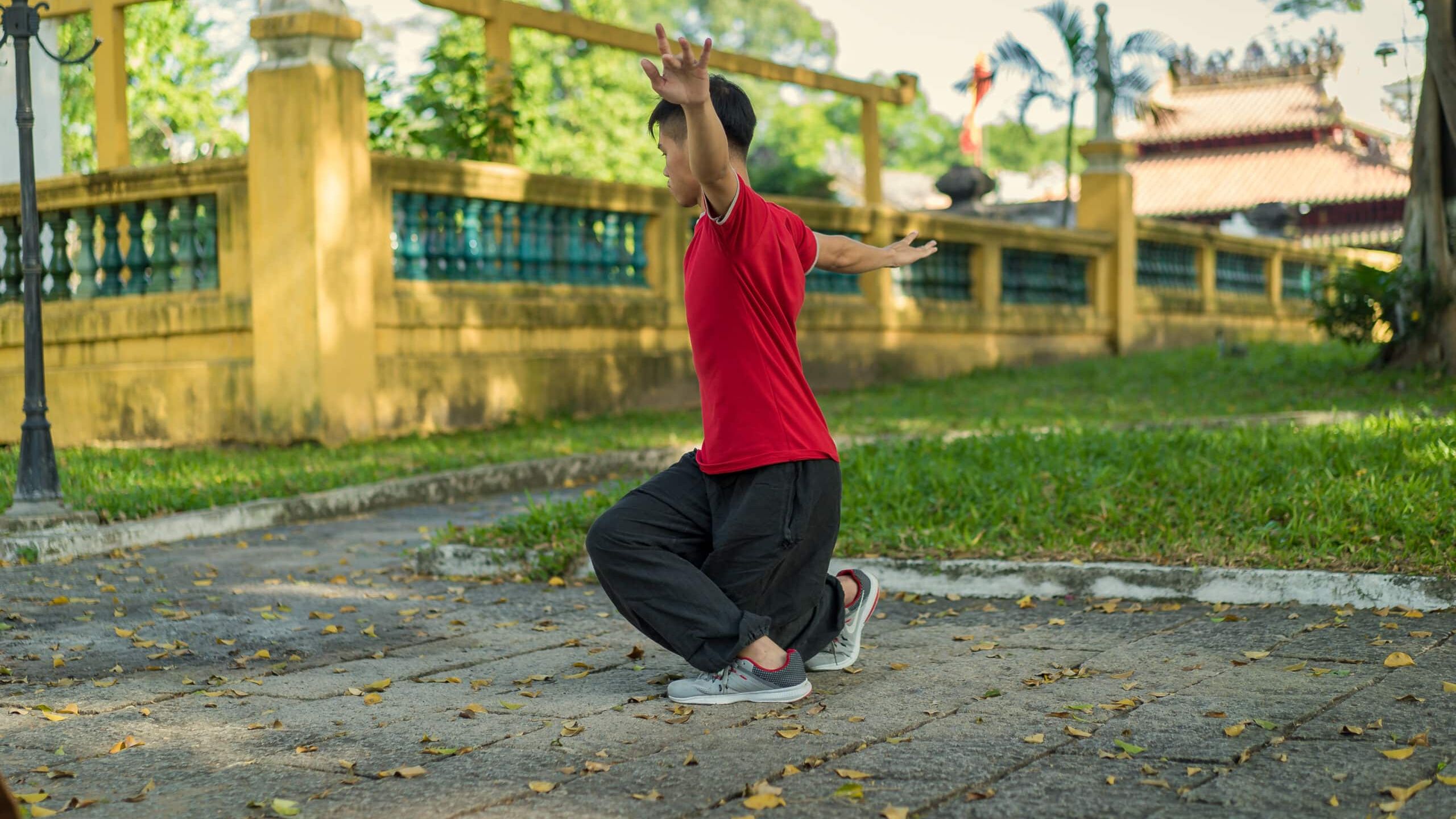
Qigong Fascia Stretching
Mar 26, 2023Qigong Fascia Stretching: An Effective Way to Relieve Stress and Improve Health
Qigong is an ancient Chinese practice that combines breathing exercises, meditation, and movement to promote balance, flexibility, and overall well-being. One of the most powerful aspects of qigong is its ability to enhance the flow of qi or life force energy. This qi or life force energy is essential for good health. Another major key element of qigong is fascia stretching. Fascia stretching is a specific type of stretching that targets the fascia or connective tissue in the body. In this article, we will explore the benefits of qigong fascia stretching and how it can help relieve stress and improve health.
What is Fascia?
Before we delve into the benefits of qigong fascia stretching, it is important to understand what fascia is. Fascia is a connective tissue that surrounds and supports muscles, bones, and organs in the body. It is like a network of tissue that runs along the body, providing structural support and helping to transmit forces throughout the body. Fascia is highly responsive to stress and trauma by creating fascial adhesions. It becomes stiff or tight as a response to wear and tear. When this happens it can restrict movement, cause pain, and affect overall health.
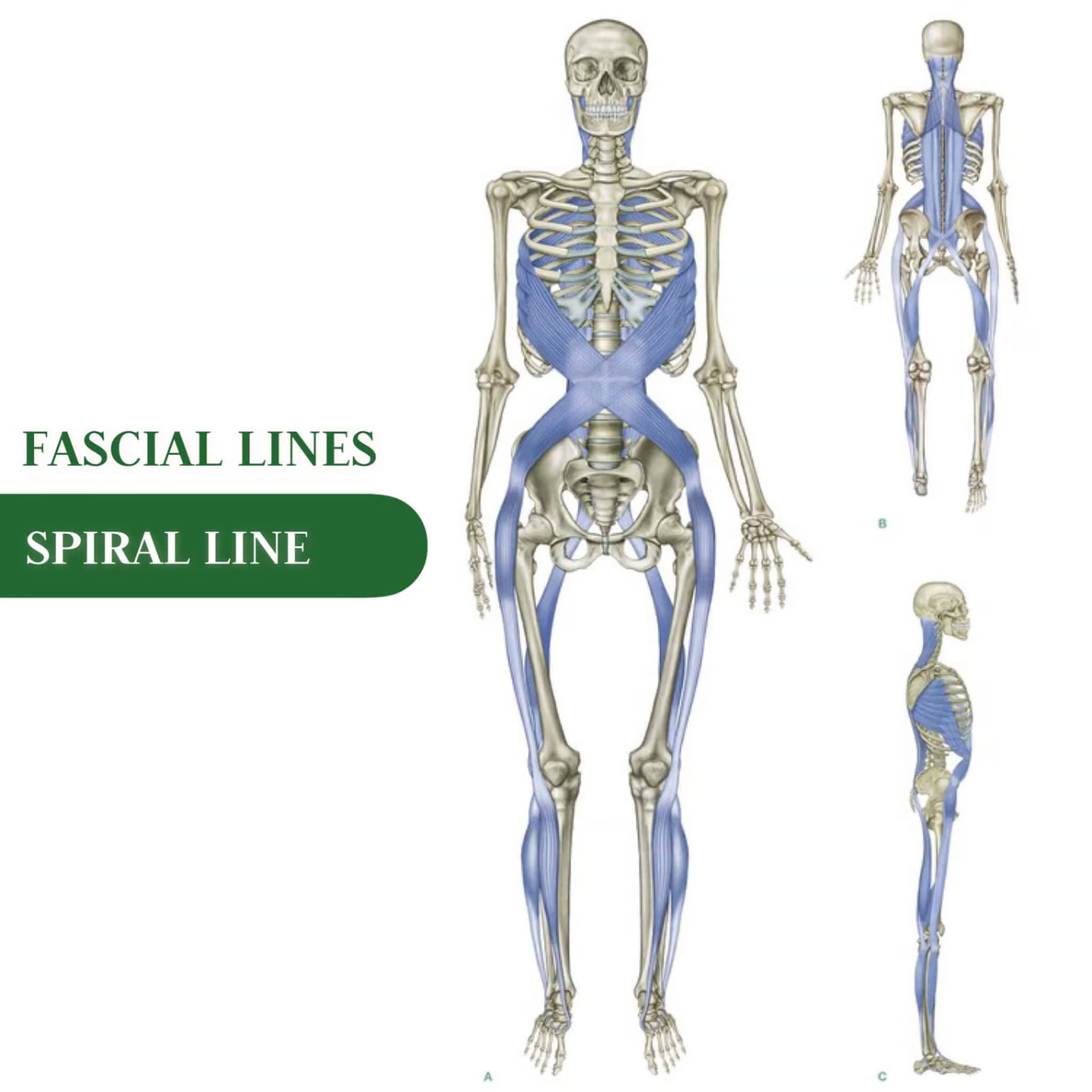
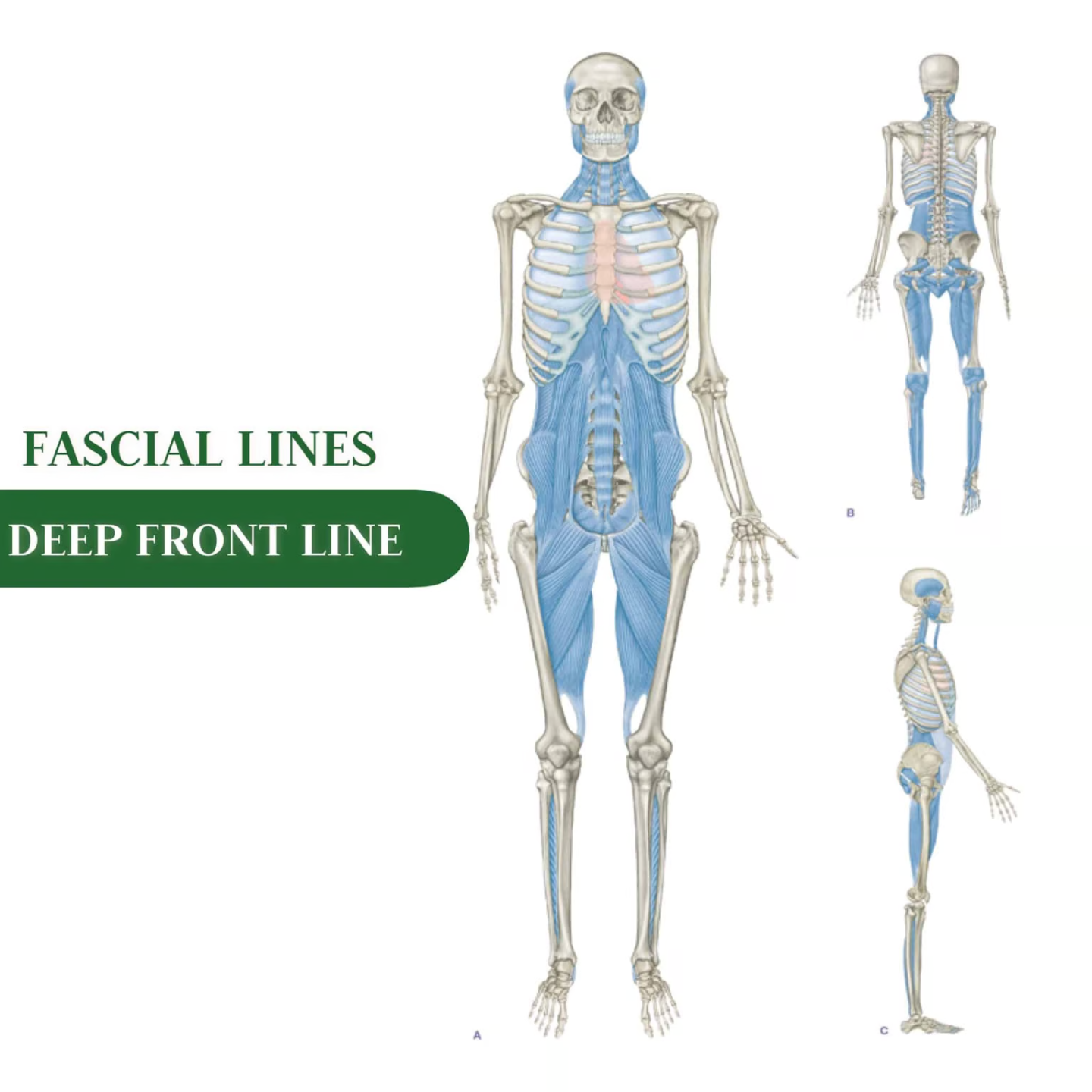
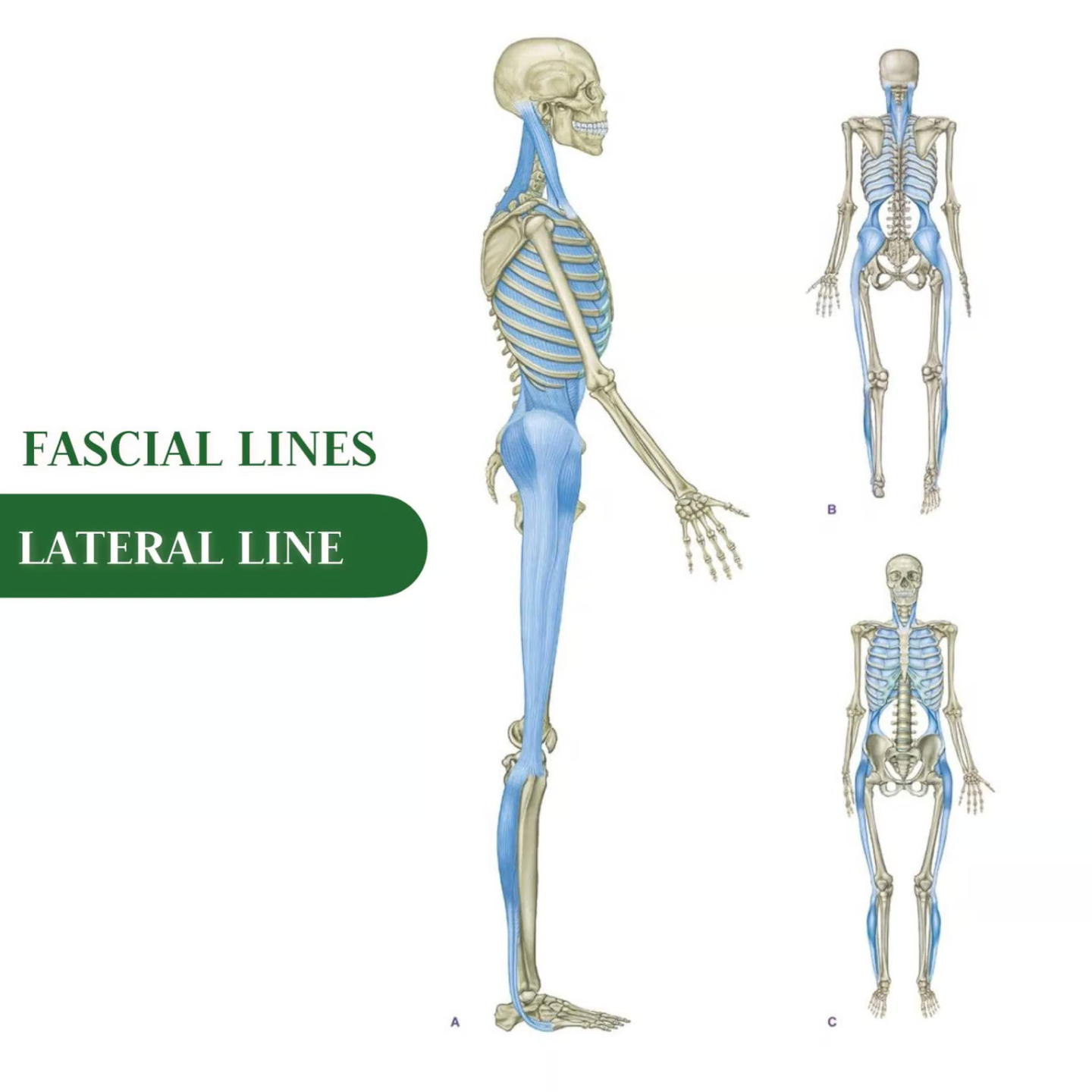
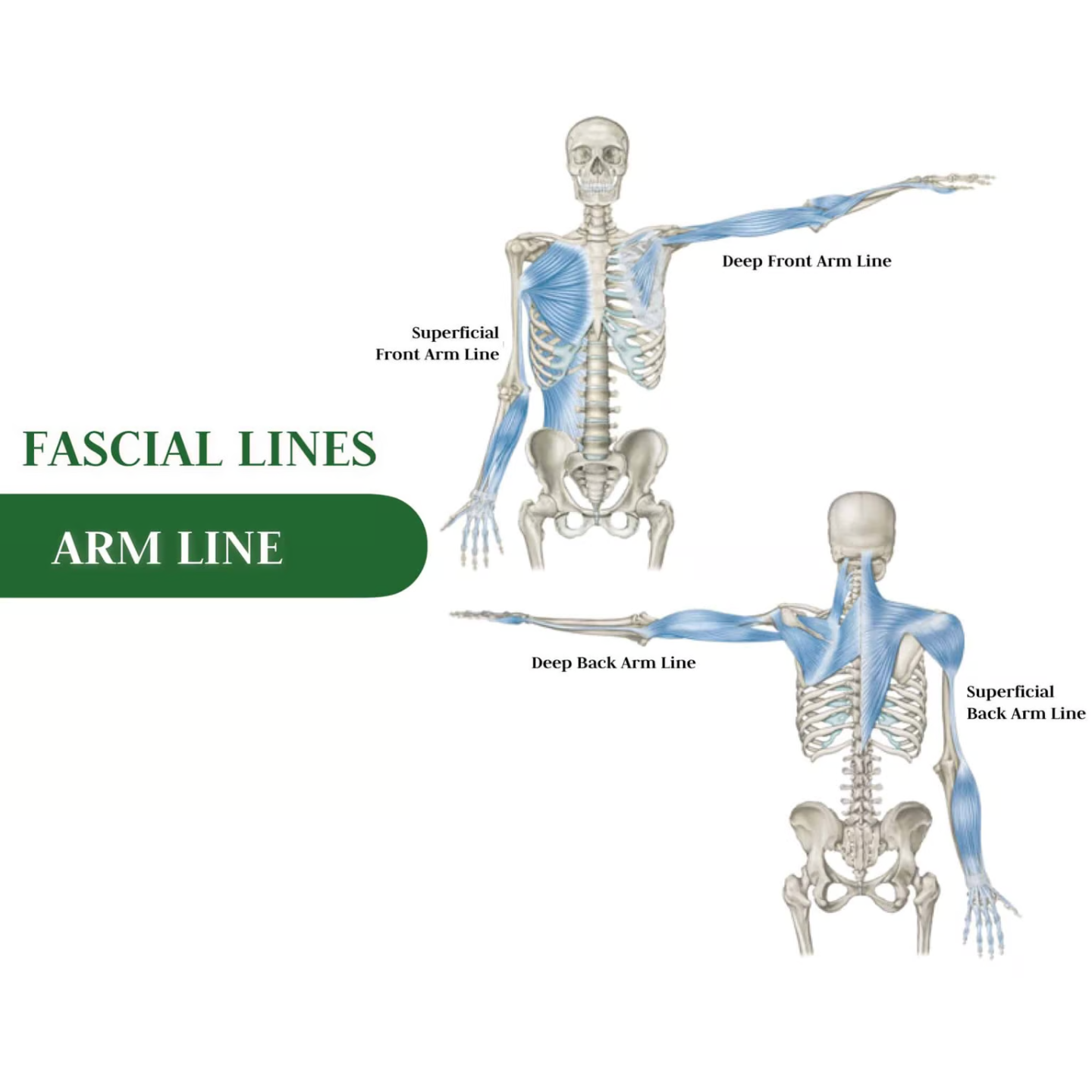
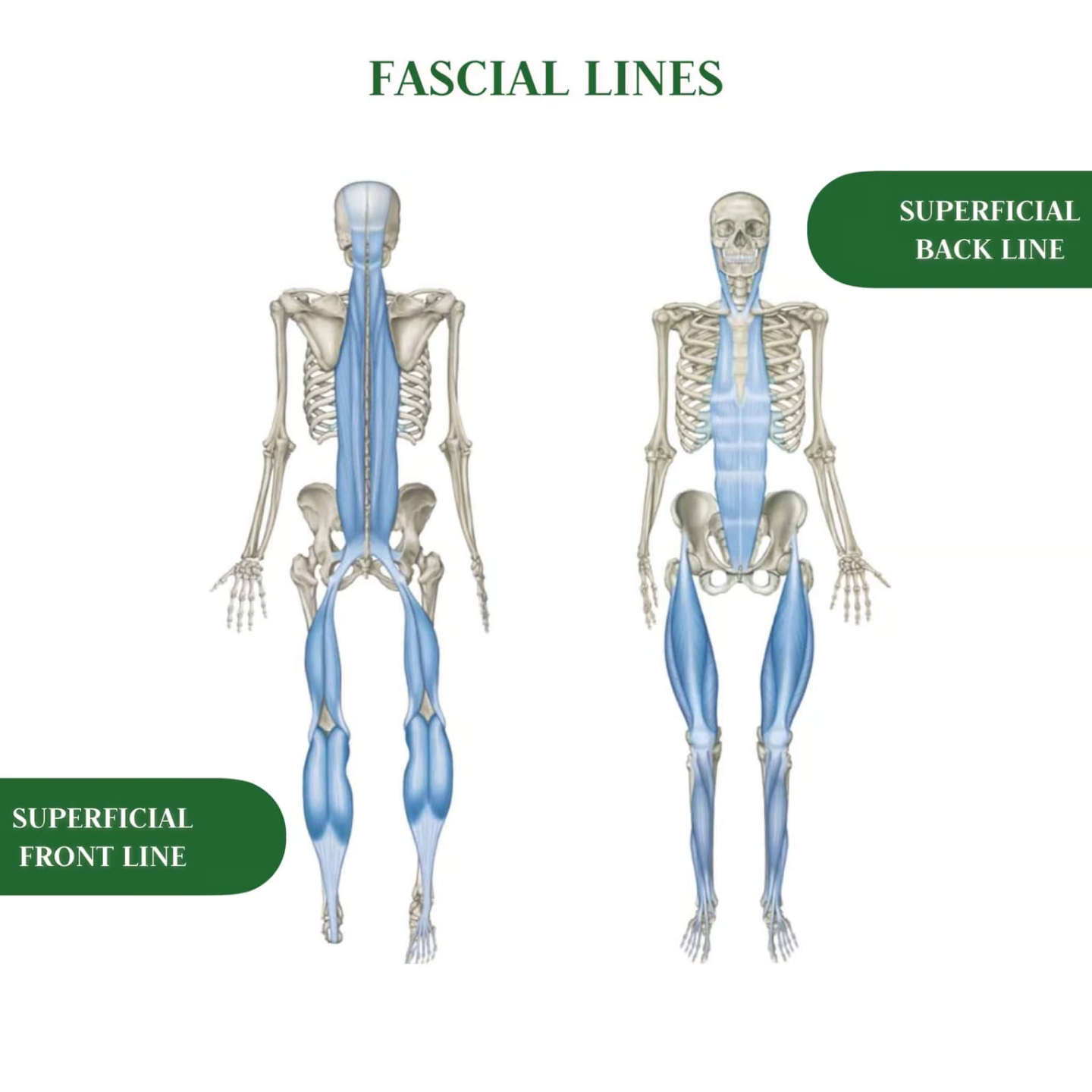
Fascial Lines
The basic hypothesis of Thomas Myers’ writings on Fascia kinetic lines is that muscles, no matter what they do individually, also affect tissues throughout the entire body through Fascia based interconnections. These connective tissue structures work in sync creating a fluid and balanced movement and a posture that maintains balance and direct contact between all body parts. They consist of membranes and ligaments, both in the superficial and deep connective tissues of the body.
How Does Qigong Fascia Stretching Work?
Qigong fascia stretching is a specific type of stretching that targets the fascia in the body. It involves slow, gentle movements that gradually elongate the muscles and fascia, promoting flexibility, circulation, and relaxation. The movements are synchronized with the breath, creating a calming and meditative effect on the mind and body. Qigong fascia stretching is designed to improve the elasticity and resiliency of the fascia, which can help alleviate pain, improve range of motion, and reduce stress.
Benefits of Qigong Fascia Stretching:
Fascia stretching can offer numerous benefits to individuals of all ages and physical abilities. Here are some of the key advantages:
1. Enhances Flexibility: Tight fascia can limit the range of motion in joints, which can lead to stiffness, pain, and injury. By stretching the fascia, you can improve the flexibility of the muscles and joints, making it easier to move and perform daily activities.
2. Reduces Pain: Fascia stretching can help to decrease muscle soreness, joint pain, and headaches. It can also aid in the recovery of injuries by promoting blood flow and oxygen to the affected area, which can stimulate healing.
3. Improves Posture: Tight fascia can pull the body out of alignment, leading to poor posture and increased risk of injury. Fascia stretching can help to realign the body, reducing strain on muscles and joints, and promoting better posture.
4. Enhances Sports Performance: Fascia stretching can improve the efficiency of muscles by increasing their flexibility and elasticity. This can lead to better performance in sports, reducing the risk of injury and enhancing overall physical performance.
While fascia stretching can offer numerous benefits, it is important to be mindful of any limitations or precautions. Some precautions to consider include:
1. Start Slowly: If you are new to fascia stretching, start slowly and ease into the exercises to avoid overstretching or injury.
2. Respect Your Limits: Be mindful of your body's limits and avoid pushing beyond what feels comfortable or safe.
3. Listen to Your Body: Pay attention to any pain or discomfort during the exercises and adjust as needed.
4. Consult a Professional: If you have any prior injuries or medical conditions, consult a professional before starting any fascia stretching routine.
Qigong Fascia Stretching Exercises:
Meridian Qigong:
Rolling the Ball
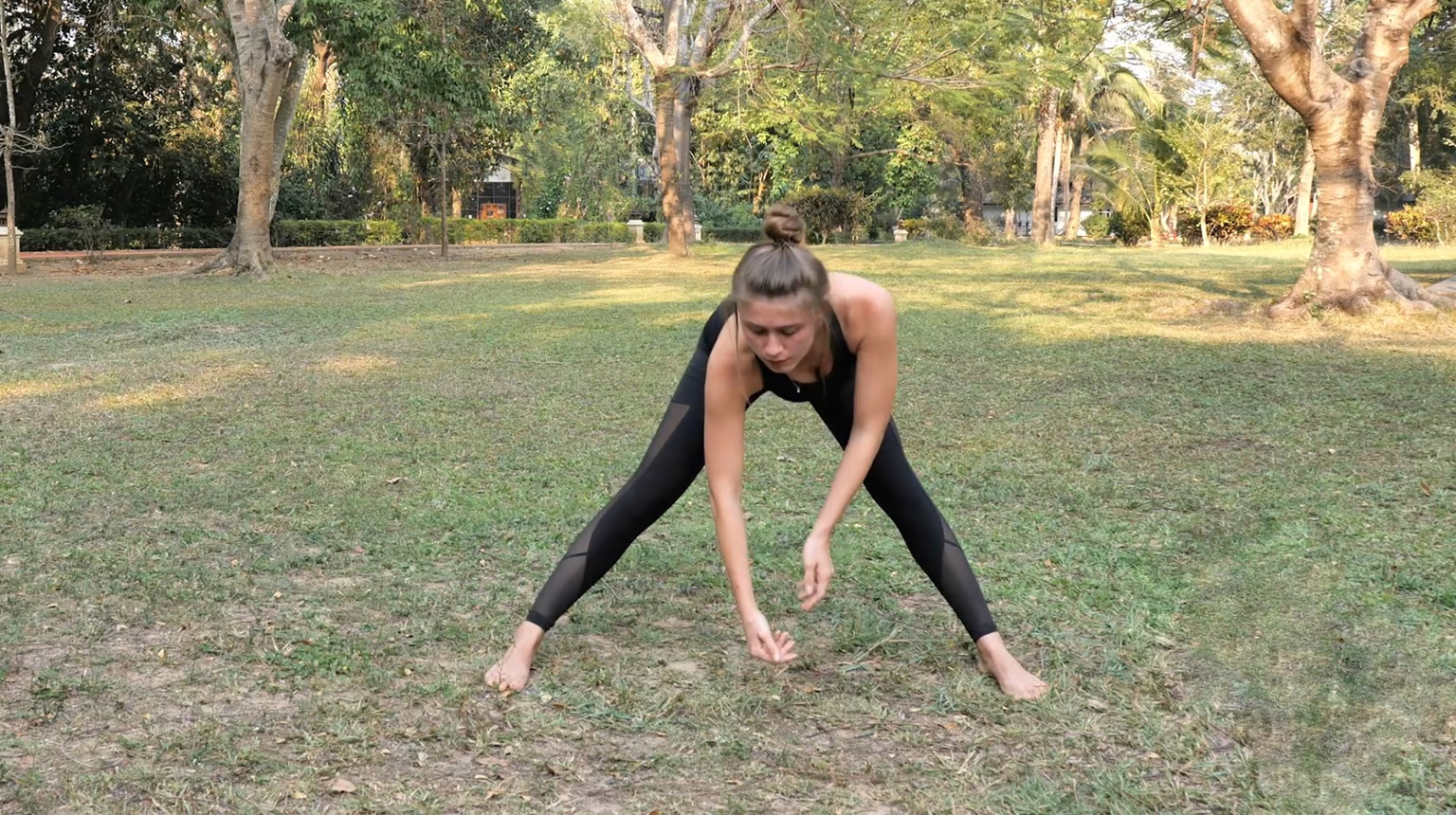
The Rolling the Ball qigong is a simple and gentle movement that can release tension in the fascial tissue of the low back, hips and pelvic region. It activates the Lateral Lines and gentle moves through the Spiral Lines. The Rolling the Ball qigong helps improve circulation to the muscles, organs and fascia. This exercise has a slow and gentle movement that allows it to release tightness caused by fascial adhesion. When you view the Rolling the Ball qigong as a whole-body workout with one exercise, you will see how profound its effects are on overall health.
Heavenly Pillars
- Heavenly Pillars 2: Turtle Looks Behind

The Turtle Looks Behind Qigong helps release tension in the fascial tissue in the Arm Line, as well as the Spiral Line, Superficial Front Line and Superficial Back Line. It helps those who have stiffness in the neck and back as well as soreness in their arms. A great way to relieve stress in your body.
- Heavenly Pillars 3: Tilting
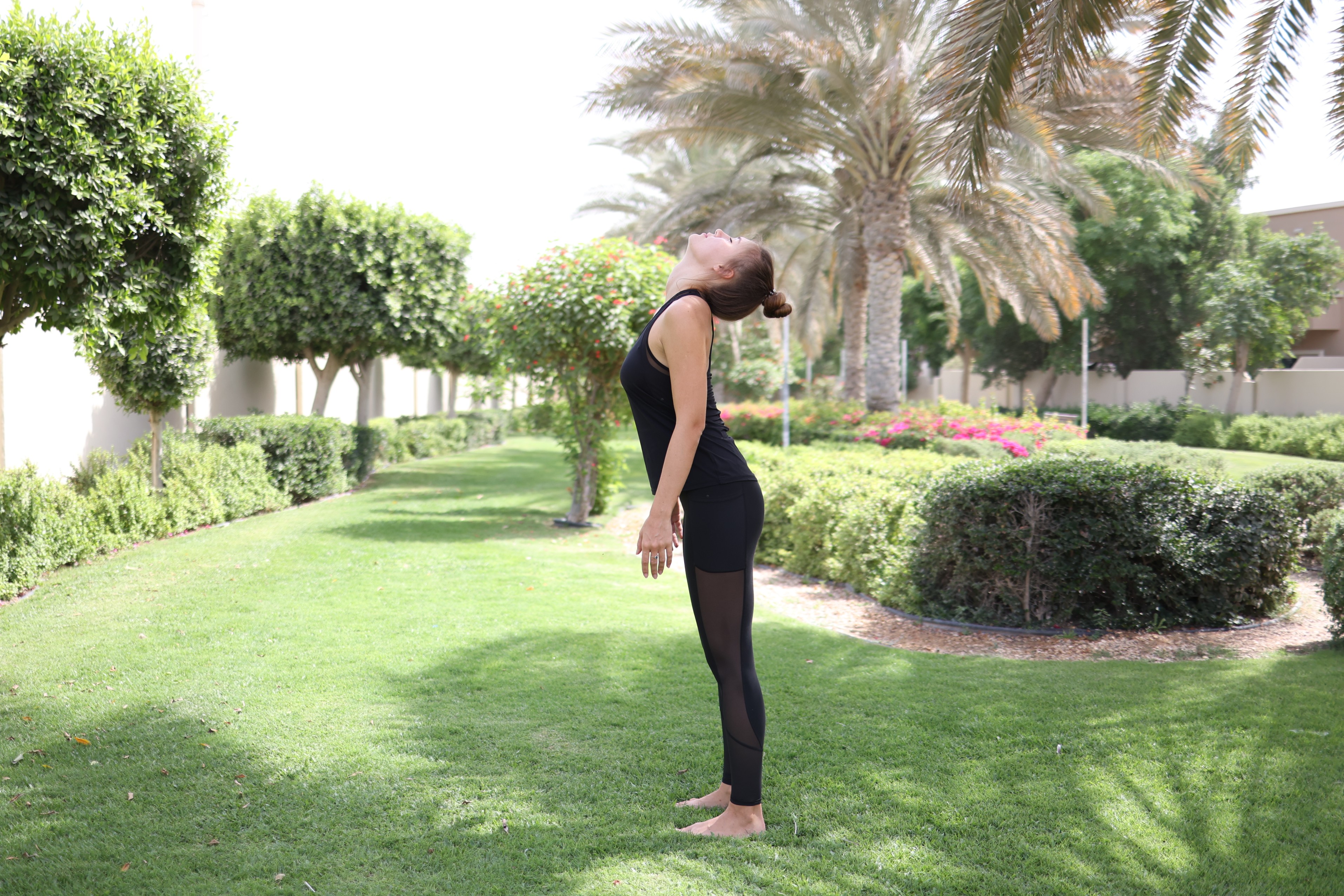 Tilting is a very good exercise to release tension in the Arm Line which allows the energy to flow smoother through fingers which are where meridians or energy pathways begin or end. It is beneficial to release tension and stiffness in the neck and wrist.
Tilting is a very good exercise to release tension in the Arm Line which allows the energy to flow smoother through fingers which are where meridians or energy pathways begin or end. It is beneficial to release tension and stiffness in the neck and wrist. Two Hands Moving Heaven (Liver and Spleen Meridian)
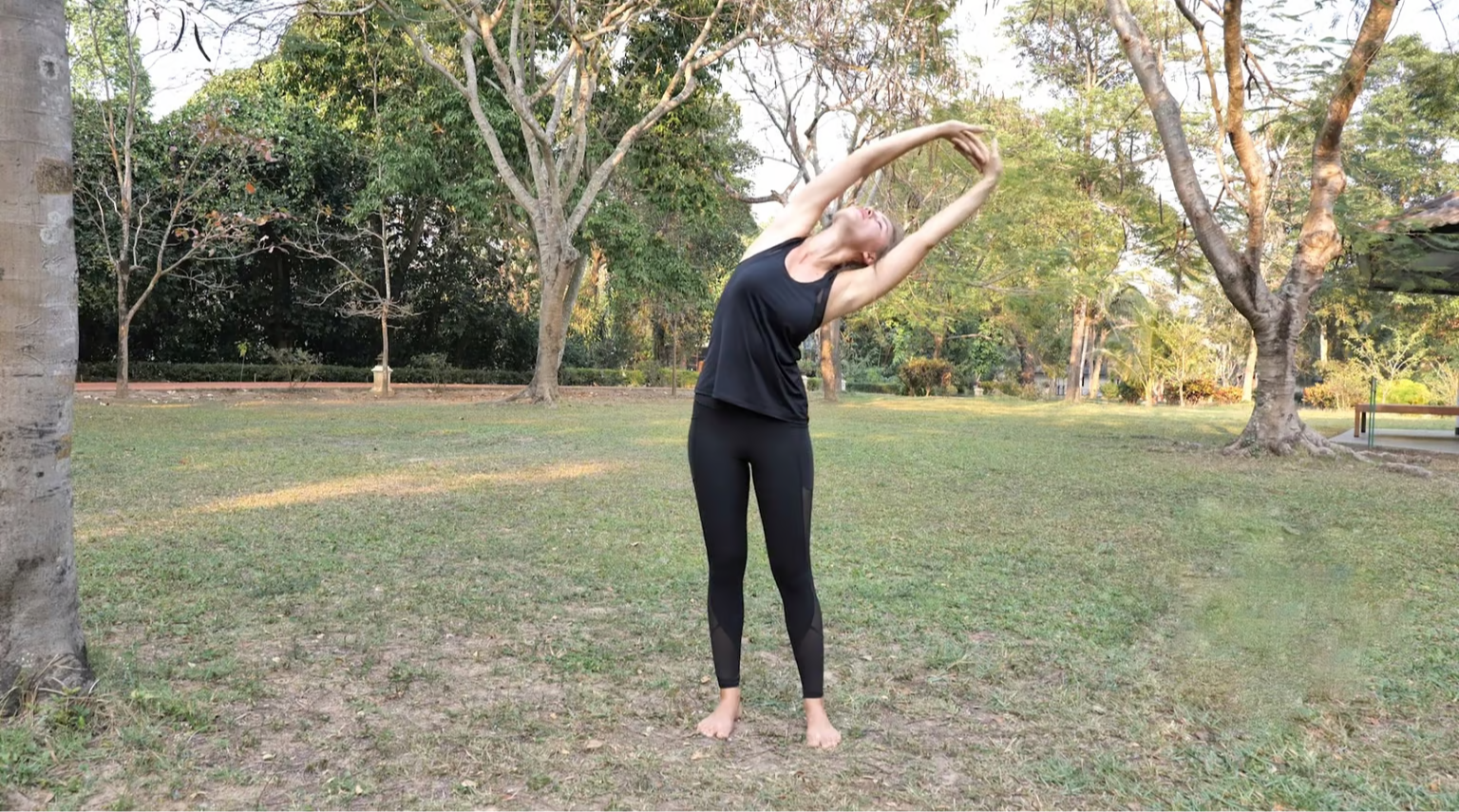
This exercise smooths the Arm Line & Lateral Line. The deep bending to the sides creates space in the side body, allowing us to move better. It helps those who have stiff shoulders and back release tension in those areas.
8 Trigram Qigong
Serving Teacups
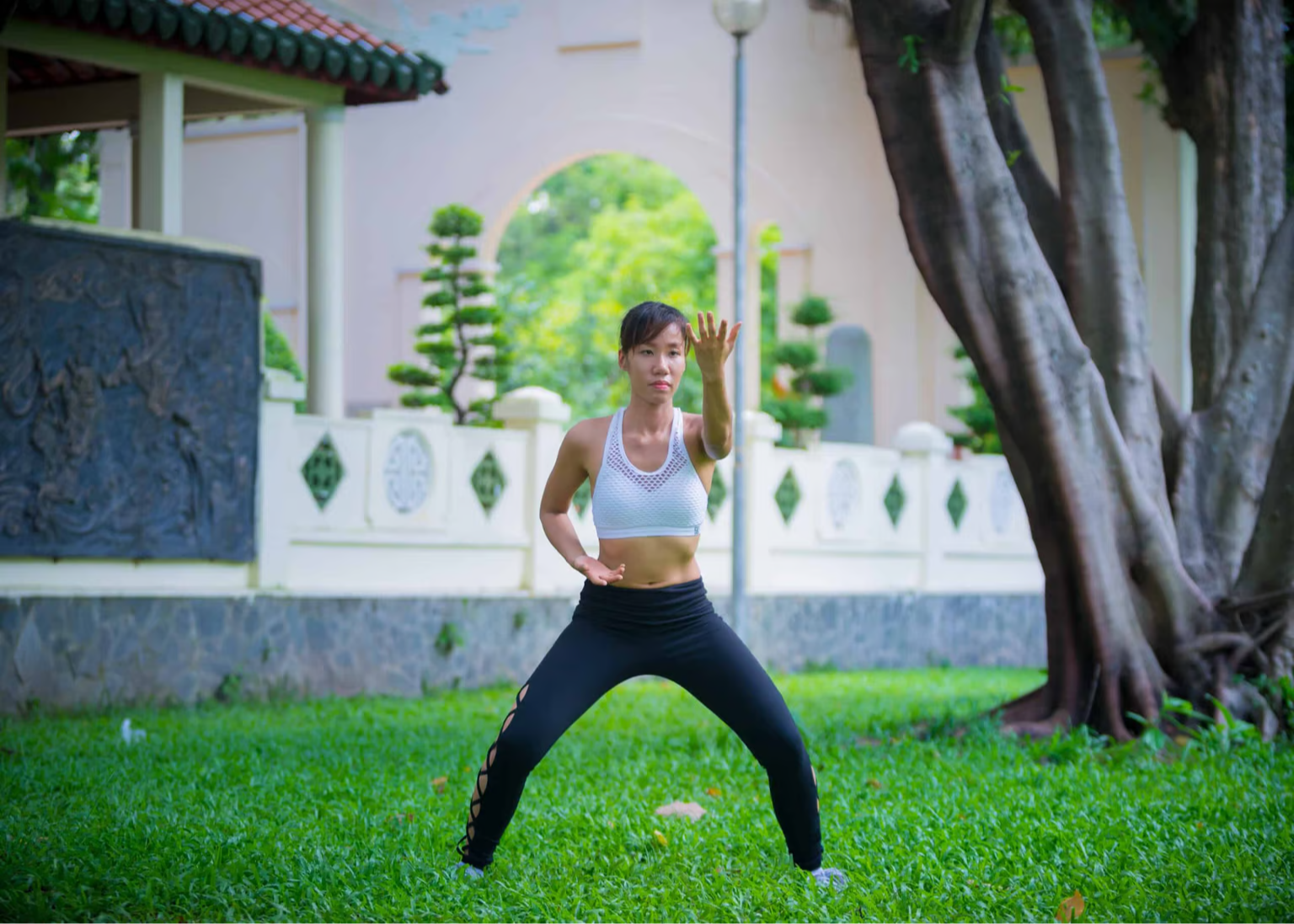
This exercise is best to allow energy to flow in the body. In this exercise we use the Spiral Line, Arm Line, Superficial Front Line and Superficial Back Line. This benefits those with stiff back and shoulders because it stretches all of these muscles.
5 Element Qigong
Tiger Qigong (Metal Element)

The Tiger Qigong is a powerful, yet gentle, form of energy-based movement to stretch and release the muscles of your arms, shoulders and back. Best for those who have tight muscles in their shoulders and chest. It engages the Arm Line through the deep twist combined with the pushing forward and pulling backwards.
Snake Qigong (Earth Element)

Snake Qigong is a powerful healing practice that activates the Lateral Lines by grounding/rooting your feet to the ground as you extend your body. There is an interplay between the Deep Front Line and Lateral Line to create stability as you move and a twist at the end of each movement to activate the Spiral Line.
5 Animal Qigong
Crane 1 - Crane Spreads its Wings Qigong (Fire Element)
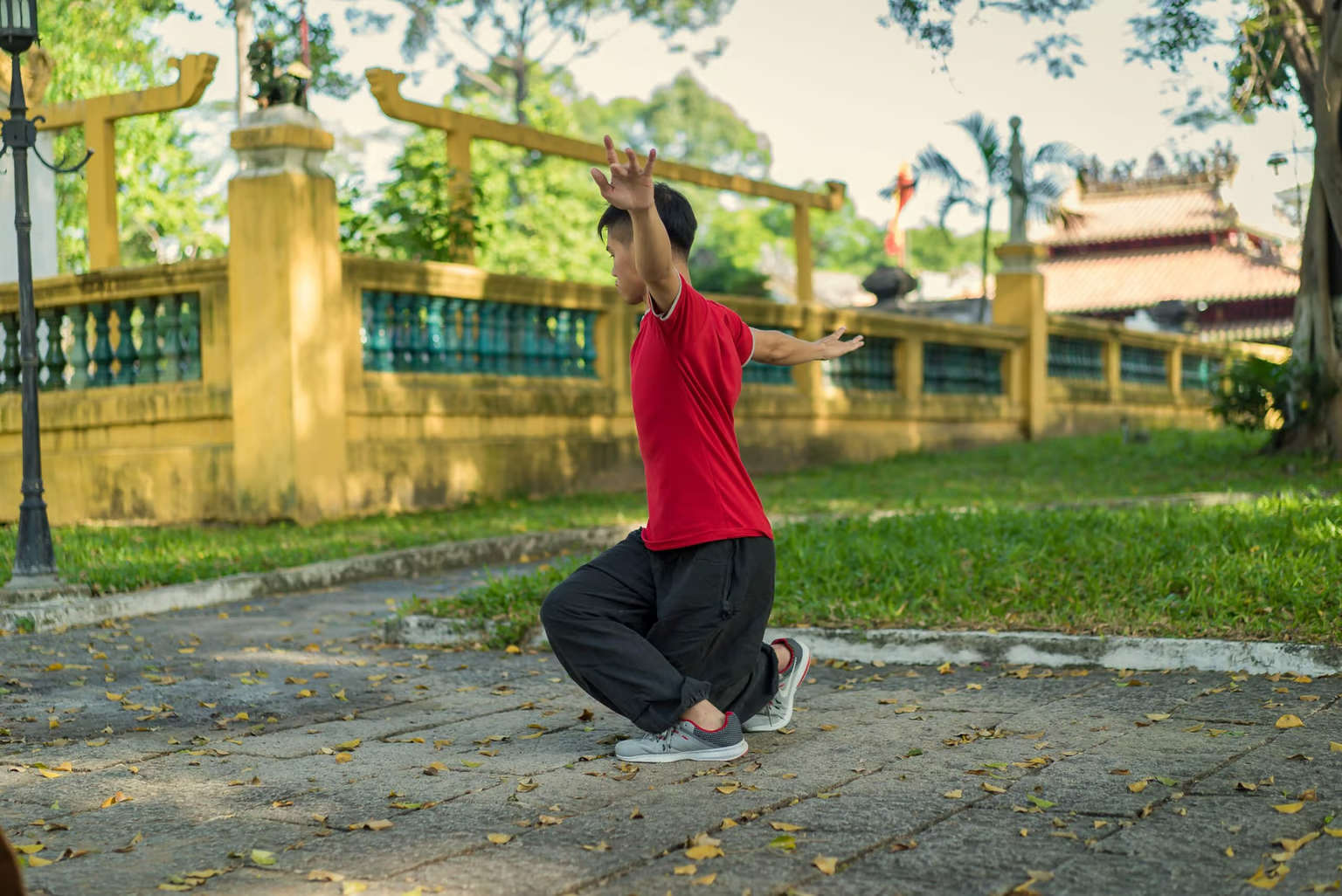
In this qigong movement, you'll spiral your arms, legs and torso in tandem to activate the Spiral Line running through the center of your body. We use strength when we balance in this movement. This movement also strengthens side body mobility while also improving side leg stability.
Deer IV - Deer Slaps its Legs Qigong (Water Element)
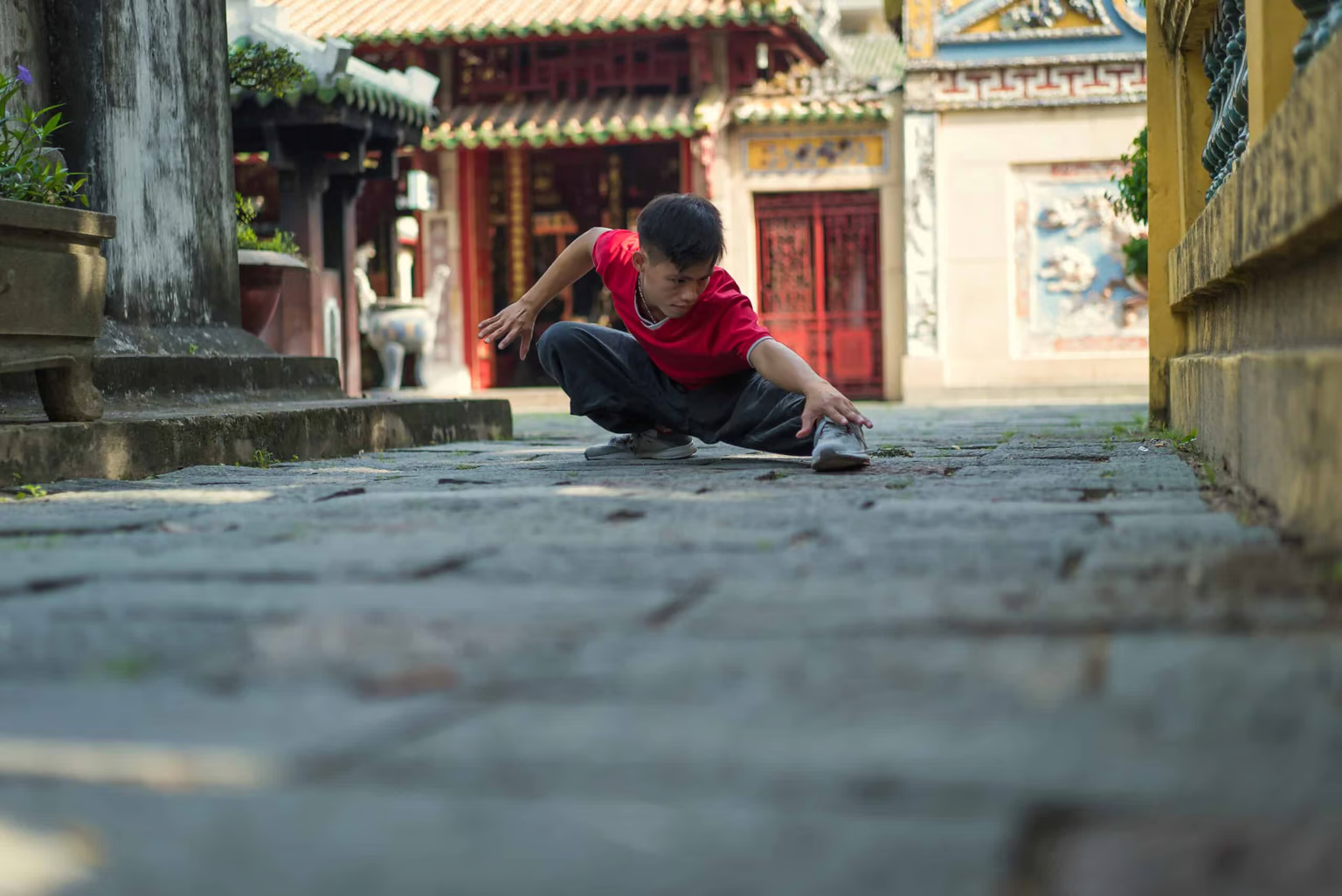
The Deer IV is a deep and powerful qigong practice that engages your entire body. There is a really deep opening as weight transfers from each side which creates space around the fascia in the hip joint. The Deer IV also creates deep hip mobility so you can have better posture as well as greater movement through your spine, hips, shoulders and more.
Learn more about Qigong Fascia Stretching
Qigong fascia stretching is a powerful practice that can help alleviate stress, reduce pain, and improve overall health. By targeting the fascia in the body, qigong fascia stretching can improve flexibility, circulation, and range of motion, promoting relaxation, mindfulness, and enhanced well-being. By incorporating fascia stretching into your routine, you can enhance your physical performance, prevent injury, and promote better posture and movement. If you are interested in learning more about qigong fascia stretching, click the links in the banners below to direct you to our qigong courses. Remember to start slowly, listen to your body, and consult a professional if needed.




